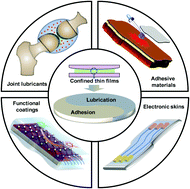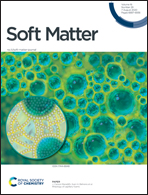Surface forces and interaction mechanisms of soft thin films under confinement: a short review
Abstract
Surface forces of soft thin films under confinement in fluids play an important role in diverse biological and technological applications, such as bio-adhesion, lubrication and micro- and nano-electromechanical systems. Understanding the involved interaction mechanisms underlying the adhesion behaviors and tribological performances (i.e., friction and lubrication) of various confined soft thin films is significant in the development of both fundamental science and practical technologies. In this review, the fundamentals of surface forces are briefly presented. The widely utilized force measurement techniques including surface forces apparatus (SFA), atomic force microscopy (AFM) and spacer layer interferometry tribometer techniques are introduced. The advances in the fundamental understanding of a wide range of adhesion and tribological phenomena have been reviewed, in terms of the intermolecular and surface interaction mechanisms involved. The influences of various factors such as confined film properties, experimental conditions (e.g., normal load, and sliding velocity) and environmental variables (e.g., salts, salinity, additives and pH) on the adhesion, friction or lubrication forces of confined soft thin films are presented. The correlation between adhesion hysteresis and friction/lubrication behaviors has been discussed. Some of the challenging issues remaining and future perspectives are also provided.



 Please wait while we load your content...
Please wait while we load your content...